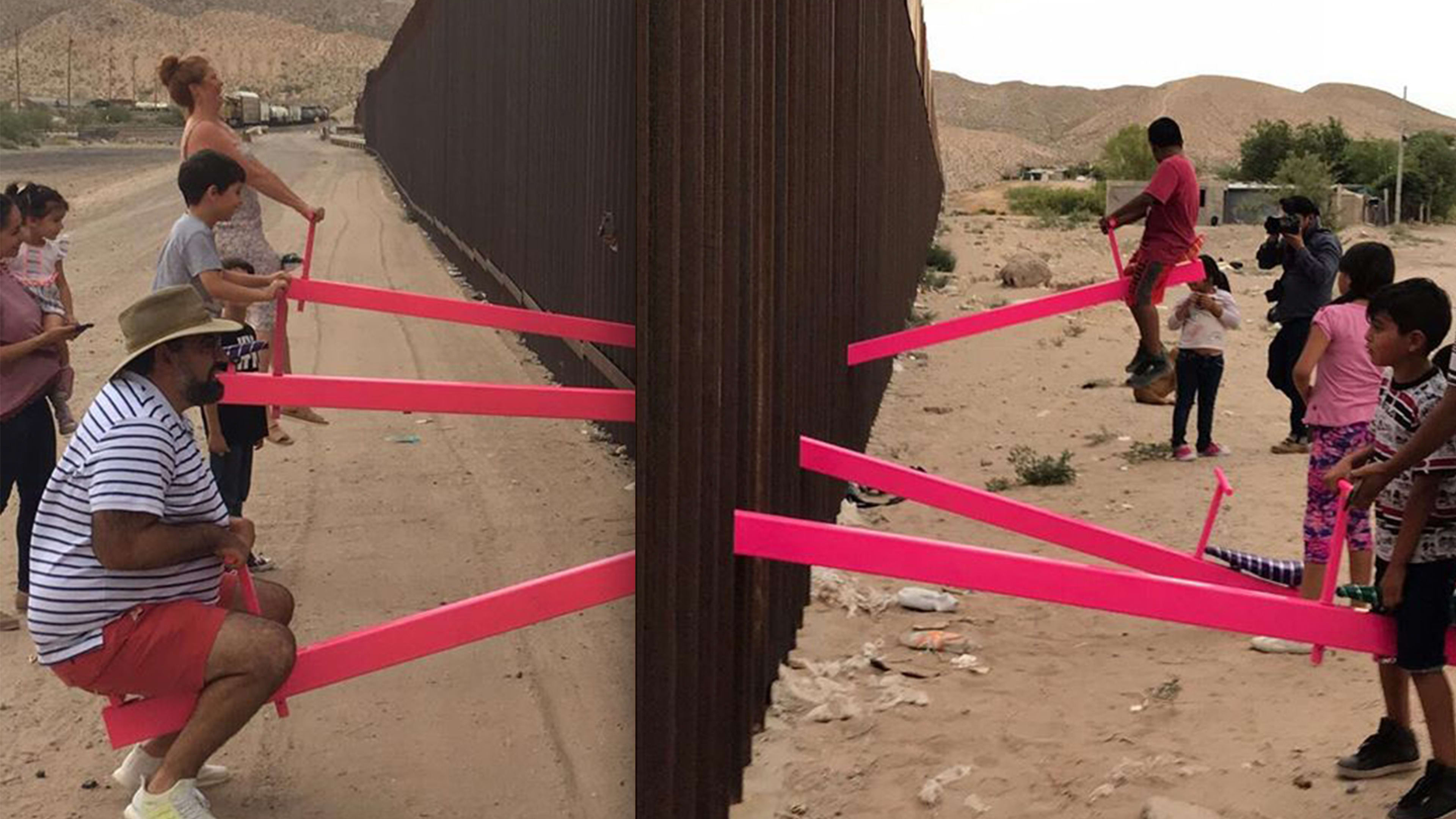The border wall between Mexico and the United States is the ultimate symbol of division. But two architects have found a simple, playful way to connect the people on either side: seesaws.
Ronald Rael and Virginia San Fratello, partners at the design firm Rael San Fratello and professors at UC Berkeley and San Jose State University respectively, designed and built three pink seesaws that span the border wall near El Paso, Texas, and Juárez, Mexico. The installation helps children from both countries play together, regardless of the wall between them.
“The wall became a literal fulcrum for U.S.-Mexico relations and children and adults were connected in meaningful ways on both sides with the recognition that the actions that take place on one side have a direct consequence on the other side,” Rael wrote on Instagram this week. He says that the experience of building the seesaws was one of the most incredible of his career.
A video of the children joyfully seesawing across the wall as their parents look on is in stark contrast to the horrific images coming out of border-patrol facilities, where migrant children are still being detained without their parents in such squalid conditions that several kids have died.
Rael has been focusing on the border wall for more than a decade. He and San Fratello previously published a book, Borderwall as Architecture, which examines the impact of the barrier and includes conceptual designs by the architects. The project began in 2009 as a graduate-level design studio that Rael taught at Berkeley, and it expanded into a full research project on how to reimagine the wall as a town center, as a piece of infrastructure that brings people together rather than keeping them apart. The duo had sketched the concept of this border-wall seesaw, called the Teetertotter Wall, a decade ago.
Since 2016, President Trump’s continued promises to expand the already existing border wall has inspired resistance among architects, and other designers have proposed radical ideas about how the wall could be transformed into something more positive. While many of these concepts have yet to materialize, the seesaws are a real installation that poignantly helps children on either side play together, highlighting the simple, undeniable humanity of the people who live along both sides of the wall.
Recognize your brand’s excellence by applying to this year’s Brands That Matter Awards before the early-rate deadline, May 3.
